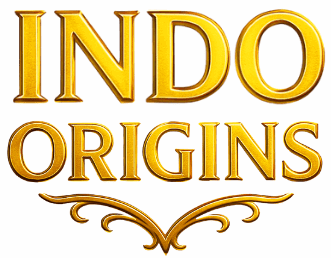
Ancient Tamilakam – the Tamil country of the Sangam period (c. 300 BCE – 300 CE) – stood as a vibrant coastal crossroads where diverse peoples converged. Bordered by the Indian Ocean and enriched by flourishing ports, Sangam-era Tamil Nadu was far from an isolated land. It was a cosmopolitan hub of the Old World, where traders from distant regions mingled with the indigenous Tamil people. Contemporary evidence from literature, archaeology, and anthropology reveals that multiple human racial types – Caucasoid, Mongoloid, and Australoid – were present in Tamilakam in this era. This diversity was not coincidental; it blossomed from Tamilakam’s active role in the global silk and spice trade routes. By engaging with the Mediterranean world, Southeast Asia, and even China, ancient Tamils created a melting pot of cultures that inspires pride and curiosity to this day.
Tamilakam and the Sea: Ports Linking East and West
During the Sangam age, the Tamil region was ruled by the Three Crowned Kingdoms – the Cheras, Cholas, and Pandyas – who jointly oversaw a rich maritime trading system. Tamil literature vividly describes bustling port cities like Puhar (Kaveripattinam), Muziris (Muchiri), and Korkai, which thrived on oceanic commerce. These ports were the nerves of international trade, connecting South India to far-flung markets:
- Muziris (Muchiri) on the west coast was the famed Chera port known to the Romans for its spice trade. Ships from the Red Sea and the Mediterranean frequented Muziris in search of black pepper, pearls, ivory, and textiles, exchanging Roman gold and wine. Classical Western writers like Pliny and the author of the Periplus of the Erythraean Sea mention Muziris as a key Indian emporium, underscoring its prominence in Indo-Roman trade. The discovery of Roman gold and silver coins in Kerala and Tamil Nadu by the thousands – some hoards even containing coins of emperors Augustus, Tiberius, and Nero – attests to brisk commerce and a flow of Western merchants to this port.

- Kaveripattinam (Poompuhar) on the east coast, the Chola Kingdom’s harbor at the mouth of River Kaveri, was another thriving entrepôt. The Sangam poem Pattinappalai paints a striking portrait of Kaveripattinam’s cosmopolitan markets. It lists horses from distant Yavana lands (West Asia or Greece), black pepper from inland Kerala, gemstones and gold from North India, sandalwood and aloeswood from Southeast Asian isles, pearls from the southern seas, and grain from Sri Lanka and beyond all pouring into the port’s warehouses. The poem marvels at “limitless goods” arriving in ships and being exchanged for exports, with busy customs officials stamping the Chola tiger emblem on outgoing bales. Such accounts confirm that Tamil ports were bustling entrepôts for goods and peoples from across the known world.
- Korkai, the Pandyan port near the Gulf of Mannar, was renowned for its pearl fisheries. Divers at Korkai harvested the finest pearls, drawing merchants from the Mediterranean, the Middle East, and perhaps even beyond the Indian Ocean. Sangam literature refers to Yavana traders present at Korkai purchasing pearls and exchanging wine and gold. The Pandyan kings’ control of Korkai and nearby Muziris is noted as a source of immense wealth. With such prized commodities, the Pandyan coast naturally attracted seafarers of diverse origins.
- Arikamedu (Poduke) near today’s Puducherry was an archaeological site revealing a Roman trading colony on the Coromandel coast. Though not named in literature, excavations at Arikamedu have unearthed Mediterranean amphorae (wine jars), Roman pottery and glass beads in abundance. It appears Arikamedu was a manufacturing center for beads and fine textiles that were exported westward. Its remains illustrate how Roman and local Tamil artisans lived and worked side by side, producing goods for export – a microcosm of cultural fusion on Tamil soil.
In essence, Tamilakam’s ports functioned as pivotal links in both the Maritime Silk Route and the Spice Route. Eastern products like Chinese silk, cloves, and aromatics from Southeast Asia funneled into Tamil ports, to be carried west to Rome’s eager markets. Likewise, Western goods and gold came to Tamil shores, sometimes to be transmitted further East. This intercontinental maritime traffic made the towns of Tamilakam a meeting ground of many ethnicities and cultures during the Sangam age.
A Melting Pot of Peoples: Evidence of Diverse Racial Types

All this trade and travel brought a mosaic of peoples into ancient Tamilakam. Historical and anthropological evidence points to the presence of broadly three racial types in the region: the Australoid (indigenous Dravidian) base, Caucasoid (West Eurasian) visitors, and Mongoloid (East/Southeast Asian) influences. Far from being isolated, Sangam-era Tamil society interacted with and absorbed elements from each of these human groups.
